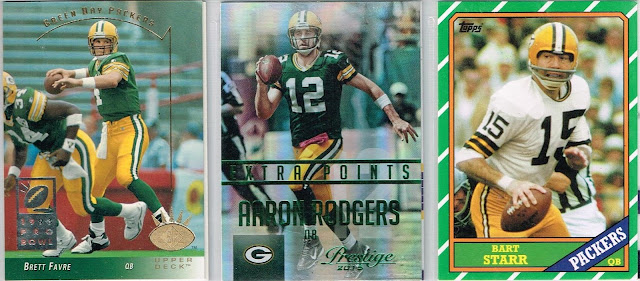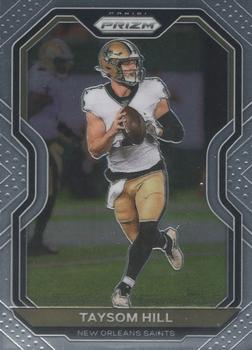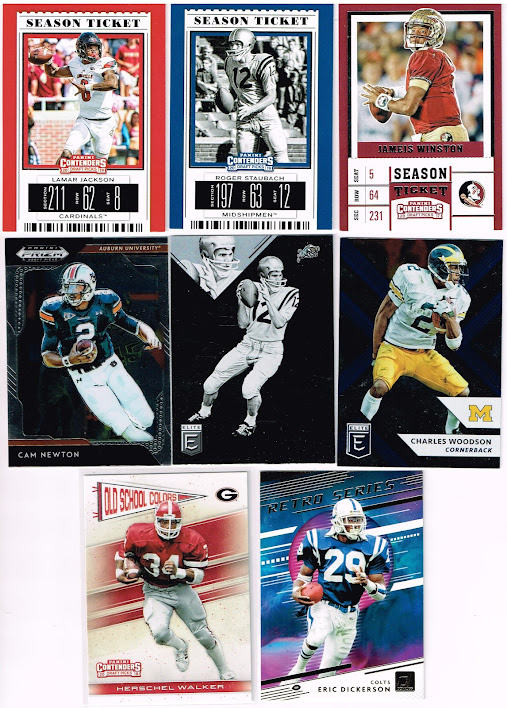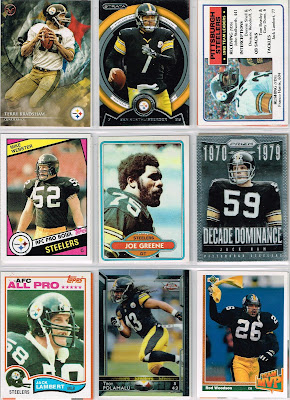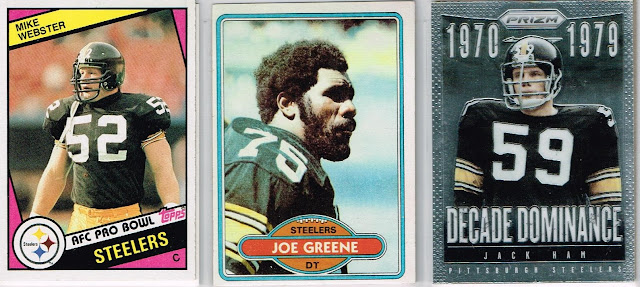
Poor Bengals. This is a team that played in two Super Bowls, but had to face Joe Montana both times. I just recently watched a fun series on NFL.com examining what if certain moments had gone differently in NFL history. The analysts concluded that if Dwight Clark had not come down with "The Catch" in the 1981 NFC title game, the Bengals could have beaten the Cowboys in their first Super Bowl. The second time, Super Bowl XXIII, the Bengals were led by league MVP Boomer Esiason and almost came away victorious. They were on the wrong end of one of Montana's finest performances, an 11-play, 92-yard drive capped by a touchdown pass to John Taylor with 39 seconds left. Then the Bengals entered one of the worst decades for a team in NFL history. They held the top pick in the draft 3 times from 1992 to 2003. They earned a top-10 pick in all but two of those 12 drafts, and had 7 top-5 picks in that span. They used them on such superstars as David Klingler, Ki-Jana Carter, Akili Smith, and Peter Warrick. The team finally started to turn around in 2003, with the help of #1 overall draft pick Carson Palmer and new coach Marvin Lewis. Since that time, they have made the playoffs seven times, winning the division four of those times, but never made it back to another Super Bowl.
Until now. In just a few days, they will face off against the Rams for all the marbles. Bengals fans hope Joe Burrow can take them to their first championship. In the meantime, we'll look back at the top nine players from the Bengals. Not surprisingly, every player here either played for the Super Bowl teams or under Marvin Lewis. When the Bengals have been bad, they've been really, really bad.
1. Ken Anderson, QB (1984 Topps)
Anderson spent 16 years with the Bengals. In that time he became the franchise's all-time leader in every passing category. His 32,838 passing yards still have not been surpassed. He was a four-time Pro Bowler and one-time All-Pro and took home the NFL MVP in 1981. The "What If" segment of "The Catch" on NFL.com speculated that a Super Bowl victory in Super Bowl XVI would have solidified his candidacy for the Hall of Fame.
2. Andy Dalton, QB (2016 Score Signal Callers Gold)
Dalton joined the Bengals as a 2nd-round pick in 2011 and proceeded to become the Bengals' signal-caller for the rest of the 2010 decade. In nine years for the Bengals, the Red Rifle became the franchise leader in touchdown passes (204), passer rating (87.5), and moved into second place behind Anderson in passing yardage (31,594). He was selected to three Pro Bowls.
3. Boomer Esiason, QB (1990 Score)
Boomer came thisclose to leading the Bengals to a Super Bowl victory. This was following his MVP-winning regular season, one of his four Pro Bowl seasons. Esiason is third place on the franchise list in yardage, touchdowns, and passer rating. His 106 AV is fifth all-time for the Bengals.
4. A.J. Green, WR (2011 Score)
Dalton was the team's 2nd-rounder in 2011. A.J. Green was their 1st-rounder that same year. That's not a bad 1-2 punch to land in a draft. Green ranks second in franchise annals in receptions, yards, and receiving touchdowns. He is first in those categories per game. Though he sat out all of 2019 with an injury, if he can keep his current pace for another couple of seasons, he would become the franchise leader in all of those categories. He has made the Pro Bowl in seven of his nine seasons.
5. Chad Johnson, WR (2009 Score)
Chad "Ochocinco" Johnson is the one guy in front of Green in all of those categories. With the Bengals, Ochocinco caught 751 passes for 10,783 yards and 66 touchdowns. He was a six-time Pro Bowler and two-time All-Pro and could find himself in Canton in the next few years.
6. Anthony Munoz, T (1991 Pro Set)
For my money, Anthony Munoz is the greatest Bengal ever. He is the only Bengal enshrined in the Hall of Fame. He played 13 seasons in the NFL, all in Cincinnati. His 174 AV is tops in Bengal history and his 133 weighted AV is 21st among all players in NFL history. He made the Pro Bowl in 11 of those 13 years and was named an All-Pro an astounding nine times. He's a member of the 1980s All-Decade Team, the Pro Football Hall of Fame, and was the only unanimously selected tackle of the NFL's All-Time Team earlier this year. No one has ever done it better than Munoz.
7. Andrew Whitworth, T (2017 Panini Phoenix Streaking Success)
Andrew Whitworth played 11 seasons in Cincinnati. During that time, he made the Pro Bowl four times and was an All-Pro twice. In all honesty, this was a tough decision because fellow tackle Willie Anderson had a nearly identical resume. Anderson actually played one more season and had a higher AV than Whitworth, but Whitworth's higher AV per game indicates he (maybe) was a bigger factor in the Bengals' wins. Really it was just splitting hairs, as both players would be deserving.
8. Geno Atkins, DT (2015 Donruss)
Geno Atkins became the first Bengal since Anthony Munoz to be named to an All-Decade Team when the Pro Football Hall of Fame announced its official 2010s All-Decade Team in April. Atkins has spent his entire ten-year career with the Bengals, making the Pro Bowl in all but two of those years. He is second on the team in career sacks with 75.5, fifth in forced fumbles with eight. Not bad for a defensive tackle whose primary job description is to stop the run. Mix in a pair of All-Pro selections, and the Bengals fared pretty well with their 2010 fourth-round pick.
9. Ken Riley, CB (1979 Topps)
Ken Riley has almost double the interceptions of the next guy on the Bengals' list (Riley's 65 to Louis Breeden's 33). He played his entire career, from 1969 to 1983, in tiger stripes. Oddly enough, despite the great player that he was, he mostly worked in anonymity; he never made the Pro Bowl and his lone All-Pro selection came in the last year of his career. He still ranks fifth in NFL history for picks. The only players ahead of him are Paul Krause, Emlen Tunnell, Rod Woodson, and Night Train Lane, with Charles Woodson tied. Can somebody explain how he put together that career without a single Pro Bowl berth? How about some Hall of Fame consideration for this guy?
As with every team, there were some difficult decisions to make here. Like many other teams, the players tend to be grouped by eras, showing the ebb and flow of the team's success. In Cincinnati's case, the success is modest. The Bengals have never been a dominant team, even during their best years. But it appears a new chapter is starting. How long before Joe Burrow, Jamarr Chase, and Trey Hendrickson make a case for their consideration among Cincinnati's all-time best? They're off to a good start so far.
Some notes on this series:
- This includes Super Bowl Era players only.
- The "nine" in Franchise 9 is to fill a page in a binder. There is no intent to fill a roster or even a starting lineup.
- A player can represent multiple teams.
- I tried to find a balance between steady producers with longevity
and explosive players with shorter careers. Time with the team does
count for something, as does impact with the team.
- For a link to Franchise 9 lists that I have already posted, click here.
- This is all subjective, so I'd love to hear whom you would choose!


